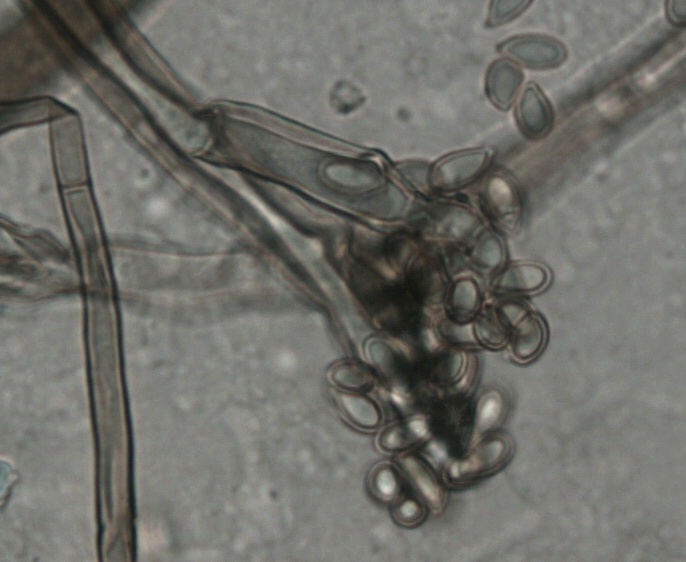Mold Library
Botrytis

Distribution
The genus Botrytis is a cosmopolitan fungus frequently isolated from soil, soft fruits (i.e. strawberries), vegetables, and decaying plants. Botrytis, the "grey mold", is found virtually everywhere plants are grown, although it is more common in humid areas in tropical and temperate regions. Botrytis species are common plant pathogens. Botrytis can also be found on indoor building materials.
Growth Characteristics
Botrytis is a rapid growing, wooly fungus. The surface color of the colonies is white initially and becomes grey to brown at maturity. Dark spots may be observed on the surface of the colonies.
Microscopic Characteristics
Conidiophores are large, septate, hyaline to brown, and branched at their apices. The branches terminate in vesicles with clusters of blastoconidia (spores) on their surfaces. Blastoconidia are located on short denticles. They are hyaline to brown, one-celled, smooth walled, and ovoid.
Health Effects
No cases of infection due to Botrytis have been reported in humans or animals. Botrytis species are known to cause Type I allergies (hay fever and asthma). Mycotoxins produced by Botrytis include botrydial and botryllin but the toxic effects are unknown.
